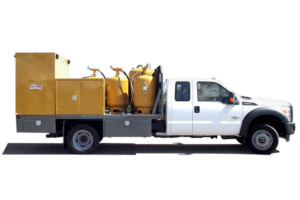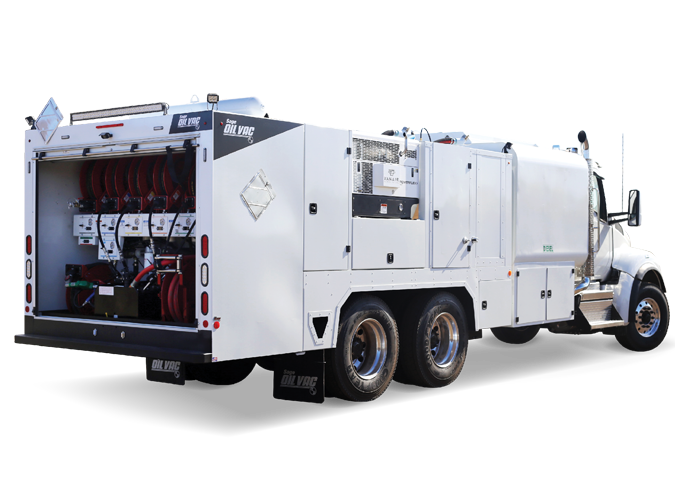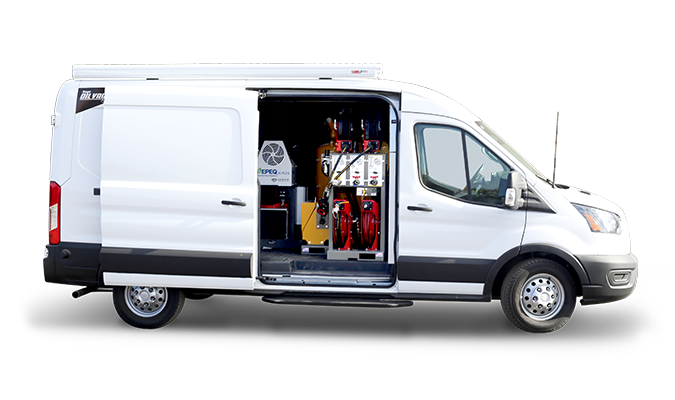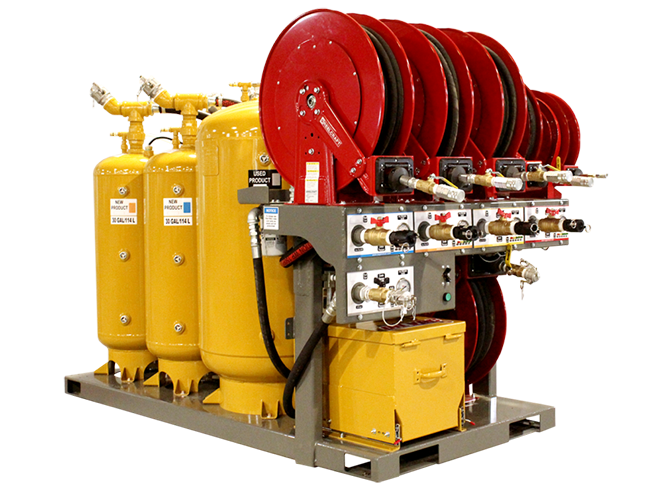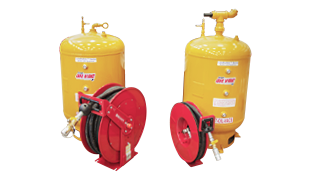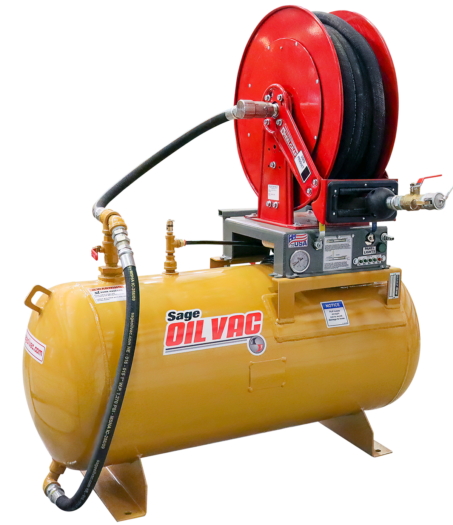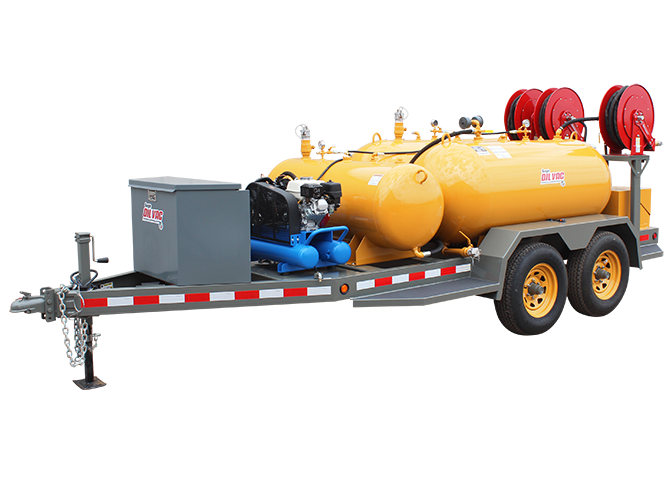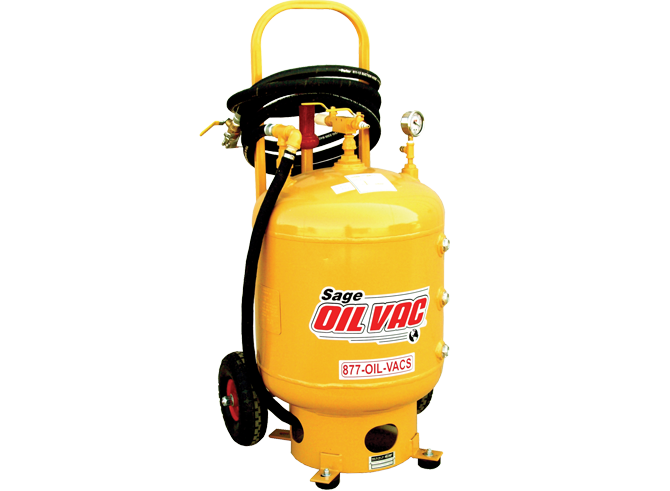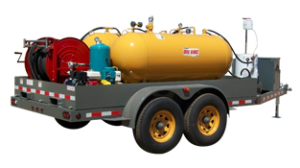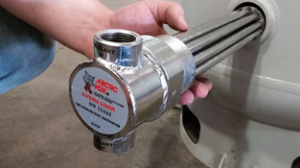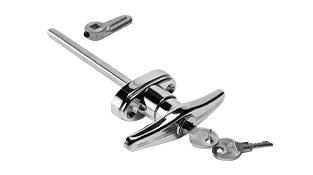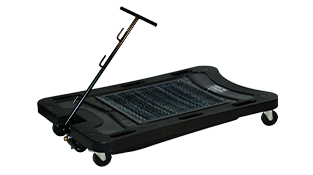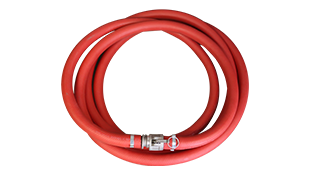Pump-free fluid exchange systems aren’t the industry standard (even though they’re faster, cleaner and safer than pump-based systems). That means we’ve run into some interesting ideas about Sage Oil Vac systems and how they work. Today, we’re busting the three most common misconceptions.
How Sage Oil Vac systems work
First, here’s a quick refresher on how our exclusive Sage Oil Vac vacuum technology works.
Our patented pump-free systems are designed for faster, cleaner and safer fluid exchanges. The not-so-secret secret is vacuum pressure, created with compressed air. This pressure allows operators to move fluids to and from tanks in an enclosed system. That means fewer spills on the job — all while saving time. Sage Oil Vac equipment can vacuum fill fresh oil tanks at a rate of up to 15 gallons per minute. Hot motor oil can be vacuumed up at 6 to 8 gallons per minute.
So why aren’t pump-free systems the top choice for all preventive maintenance pros? Because not everyone has heard the difference they can make on the job. We’re ready to set the record straight.
Myth No. 1
Sage Oil Vac systems require more air compressor run time than pump-based equipment.
It may seem hard to believe with all our talk of building vacuum pressure, but pump-free fluid exchange systems use less compressor run time than pump-based equipment.
Conventional air pump systems need to run air compressors 100% of the time to maintain performance in the field. With Sage Oil Vac equipment, you only need to run the compressor until you have the necessary pressure to drain or dispense fluids. Operators should turn off machines once 20 inches (50.8 cm) of vacuum has been captured in the waste tank and 60-80 fluid pressure per square inch (psi) in the fresh oil tank. If they do, Sage Oil Vac systems can reduce air compressor run time by up to 70% over conventional pump-based equipment.
You also have options with our equipment. Pressurize your tanks in the shop with compressors before you leave or on the jobsite with a gas- or diesel-powered air compressor. We have models that match the needs of every operation — not to mention custom setup offerings.
Myth No. 2
Sage Oil Vac systems are louder than pump-based equipment.
Remember when we said you can turn off the compressor once you’ve built enough pressure? That means less noise on the job, potentially reducing work-day fatigue for your crew members. Using the air compressor is good for your equipment too, helping minimize wear and tear on your equipment. Sounds like a win-win.
Myth No. 3
Sage Oil Vac systems require more pressure than pump-based equipment.
Traditional equipment uses waves of pressure to extract and dispense fluids. Sage Oil Vac systems use stored vacuum in the tank to powerfully collect fluids, then use stored pressure to efficiently dispense fluids. As a result, our systems use less cfm.
Just the facts
After all that myth-busting, let’s take a look at some of the important truths about Sage Oil Vac systems. Here are four reasons that maintenance crews choose pump-free fluid exchange systems.
- They’re cleaner. Clean, sealed tanks mean fewer contaminants are introduced into fresh fluids — not to mention how pump-free systems can reduce spills on the job.
- They’re safer. Our enclosed, no-pump system protects the operator and the environment, as tanks are not vented to the atmosphere.
- They’re faster. A Sage Oil Vac system can vacuum fill fresh oil tanks at rates up to 15 gallons per minute, dispense products at rates of up to 5 gallons a minute and vacuum hot motor oil at up to 6 to 8 gallons per minute.
- They help maximize equipment ROI. No pumps mean fewer maintenance issues — and that means a lower overall cost of ownership.
Ready to make the switch? Get in touch for a free quote.

